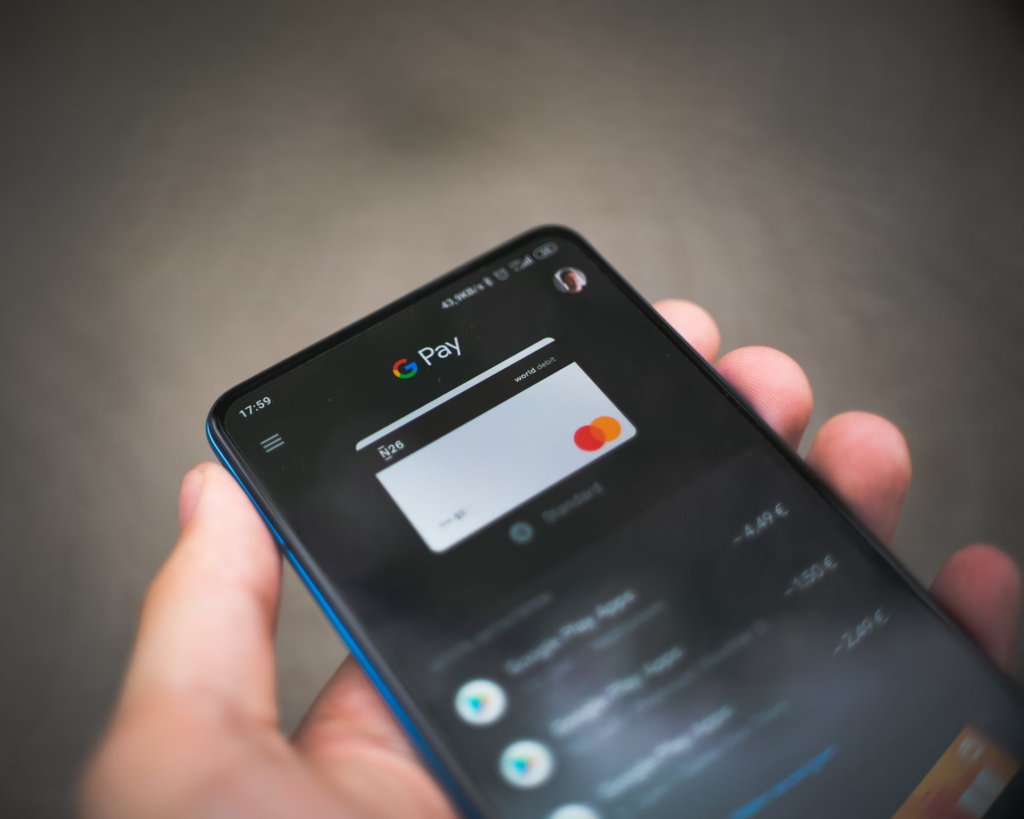How to Monetize Chrome Extension: 7 Tips to Earn Money

In today’s interconnected world, where the internet serves as the backbone of communication, commerce, and entertainment, browser extensions have emerged as indispensable tools. These small yet powerful add-ons augment the capabilities of web browsers, enabling users to customize their online experience, boost productivity, enhance security, and even add a touch of entertainment to their browsing sessions. With millions of users worldwide incorporating these handy extensions into their daily web usage, developers have recognized the immense potential to not only provide value but also to monetize their creations. Harnessing strategies on how to monetize Chrome extensions has become essential for developers looking to capitalize on their innovations.
The evolution of browser extensions has mirrored the rapid advancements in technology and the changing needs of internet users. What started as simple utilities for blocking ads or managing bookmarks has evolved into sophisticated tools offering a wide range of functionalities, from password management and language translation to social media integration and personalized news feeds. As the demand for feature-rich and user-friendly extensions continues to grow, developers have shifted their focus from purely altruistic endeavors to exploring ways to generate revenue from their creations.
Top 7 Tips How To Monetize Chrome Extension
1. Selling Advertising
Selling advertising space within your extension is a tried and tested method for monetization. By displaying ads when users interact with your extension, you can generate revenue streams effectively. There are various approaches to this strategy:
1. Display Advertising:
Displaying different types of ads, including interactive, pop-up, video, and interstitial ads, is a common method to integrate advertisements into your extension. These ads can be strategically placed to ensure maximum visibility without disrupting the user experience.
2. Rotating Ads:
Instead of selling space for static ads, consider rotating the ads within your extension. This not only maximizes your revenue potential but also allows advertisers to reach a broader audience, increasing the chances of conversions.

3. Finding Advertisers:
You have two options when it comes to finding advertisers for your extension. You can either conduct your own marketing efforts, negotiate rates, and determine the type of ads suitable for your audience, or you can opt for a monetization platform like Exmo.
4. Monetization Platforms:
Platforms similar to Exmo offer a convenient method for integrating monetization into your extension. These platforms provide access to a wide array of advertising networks. Exmo employs affiliate/referral programs as its primary method for extension monetization. This means that if a user of the extension makes a purchase, such as booking flight tickets, a portion of the proceeds is earned by the extension developer. Exmo refrains from collecting and retaining users’ personal data, underscoring its commitment to security and privacy.
By leveraging advertising within your extension, you can unlock a steady stream of revenue while providing value to your users. Whether you choose to manage your own advertising or utilize a monetization platform, selling advertising space is an effective way to monetize your extension and capitalize on its potential.
- Integration Level: 1/10 (Simple)
- Revenue: 8/10
- Support: 10/10
Monetize Chrome Extension With Exmo Today!
2. Donations
If you have devoted fans and have been distributing your Chrome extension for free for the benefit of your users, you can always ask for donations. Based on the principle of reciprocity, if your users have found greater value in your extension, they may want to thank you with a donation so you can continue working on the extension and keep it free.

Instead of one-time donations, you can ask them to set up a small regular free payment, equivalent to buying you a cup or two of coffee each month, to try to ensure a stable income. This is, of course, the least reliable method of monetization, as it depends entirely on the generosity of your audience, but if done correctly, it can be an excellent way to generate a good income from your Chrome extension.
- Integration Level: 3/10 (Low Middle)
- Revenue: 2/10
- Support: 1/10
3. Charging for the Extension
Many browser extension developers aim to monetize their creations, turning them into a source of steady income. Historically, most extensions available in browser app stores have been provided to users absolutely free of charge. However, over time, it became evident that charging a small fee for using an extension could be an effective way to generate revenue, especially if the developer has created a high-quality product that delivers real value to the user.

The approach to charging for an extension can take various forms. One of the most common methods is the “freemium” model, which involves offering a basic version of the extension for free, as well as the option to purchase a premium version with an extended set of features. This approach allows developers to attract a wide audience of users by providing them with the opportunity to evaluate the functionality of the extension before deciding to purchase the full version.
Additionally, developers may offer users temporary free access to the full version of the extension for a certain period of time, allowing them to familiarize themselves with its capabilities and benefits before making a purchase. This approach can also serve as a powerful marketing tool, as users who recognize the value of the extension are more likely to purchase the full version.
It is important to note that there are certain limitations on the ability to charge for extensions in browser app stores. For example, Google has discontinued support for paid Chrome extensions, so developers can no longer charge for extensions through the Chrome Web Store. Instead, they may utilize other monetization methods such as subscriptions, in-app purchases, or advertising models.
- Integration Level: 10/10 (Hard)
- Revenue: 6/10
- Support: 7/10
4. Providing Subscription Services
Diversifying the revenue streams of your extension can be crucial for ensuring sustainable profitability and user engagement. While the traditional approach has been a one-time payment model, offering subscriptions can unlock a regular revenue stream with significant growth potential.

Instead of a single upfront payment, subscriptions involve users paying a regular fee at intervals, typically monthly or annually, in exchange for ongoing access to premium features and services. This model not only provides a steady income stream but also fosters continuous development and support for your extension.
To effectively implement a subscription-based model, it’s crucial to offer users compelling value that justifies the recurring expense. Take inspiration from successful subscription-based services, such as VPN extensions that offer a basic free package but reserve advanced features for subscribers. Similarly, productivity tools like Grammarly offer essential features for free, enticing users to upgrade for access to additional functionalities like advanced grammar checks and style suggestions.
When developing subscription tiers, prioritize including your extension’s most desirable features in the premium package. Continuously improving these features and introducing new ones ensures that users perceive ongoing value, strengthening their commitment to the subscription.
Furthermore, transparent communication about the benefits of subscription membership and the additional perks users can expect is essential for building trust and driving conversions. Highlighting exclusive features, regular updates, dedicated customer support, and access to premium content can incentivize users to opt for the subscription model.
Moreover, maintaining a balance between free and premium offerings is crucial to ensure that users still perceive value in the free version while recognizing the additional benefits of subscribing. Regularly assess user feedback and market trends to refine your subscription offerings and adapt to evolving user needs and preferences.
- Integration Level: 10/10 (Hard)
- Revenue: 7/10
- Support: 7/10
5. Bundle Offerings
When users download your browser extension, it presents a valuable opportunity to offer related apps or other software. If you have multiple apps, you can promote your own products to boost your sales. Alternatively, you can promote applications from other companies. In this case, you can charge a flat fee for advertisements or receive a commission for every download.
Ensure that the products you bundle are relevant to your extension to enhance the value of the offering. However, be selective and avoid overwhelming users with too many apps. Offering more than three would be excessive.
- Integration Level: 3/10 (Low Middle)
- Revenue: 5/10
- Support: 4/10
6. Premium Features and Unlocking Options
Providing your extension as a complimentary download while reserving certain advanced functionalities for individual purchase can significantly enhance your monetization strategy. By adopting this approach, users have the flexibility to acquire specific features that align with their requirements, thereby tailoring their experience to suit their preferences.

Moreover, for extensions operating within a donation-based framework, integrating a system where users can unlock additional features upon reaching a designated donation threshold via platforms like PayPal adds another layer of monetization potential. This not only incentivizes users to contribute but also rewards their support with enhanced capabilities, fostering a sense of value and appreciation for their contributions.
- Integration Level: 6/10 (Low Hard)
- Revenue: 3/10
- Support: 6/10
7. In-App Purchases
Implementing in-app payments allows you to offer your extension as a complimentary download while providing users with the option to unlock additional features or functionalities for a fee. This flexible approach empowers users to customize their experience by selecting and purchasing only the features that align with their needs and preferences.
This monetization method is especially prevalent in gaming extensions, where users can enhance their gameplay by purchasing virtual goods, extra levels, or in-game currency. By offering these in-app purchases, developers can not only generate revenue but also provide users with a more immersive and enjoyable experience.
Moreover, the in-app payments model can be adapted to various types of extensions beyond gaming. For example, productivity extensions may offer advanced tools or premium features that users can unlock through in-app purchases, while utility extensions may provide additional functionalities or customization options for a fee.
By strategically implementing in-app purchases, you can maximize both the user experience and the revenue potential of your Chrome extension. Tailoring your offering to meet the diverse needs of your users while providing value-added features for purchase can drive engagement and loyalty, ultimately contributing to the success of your extension.
Enhance Your Extension’s Monetization with Exmo
Exmo stands as a holistic monetization platform designed to optimize revenue streams, particularly for browser extensions, through partner programs. Collaborating with leading advertising networks like, Exmo ensures maximum profitability for your digital assets.
Featuring straightforward setup and effortless integration with your current software, the Exmo platform streamlines the monetization journey. Keep tabs on your monetization strategies with our comprehensive business analytics and detailed reports. Begin maximizing your earnings intelligently with Exmo today.



